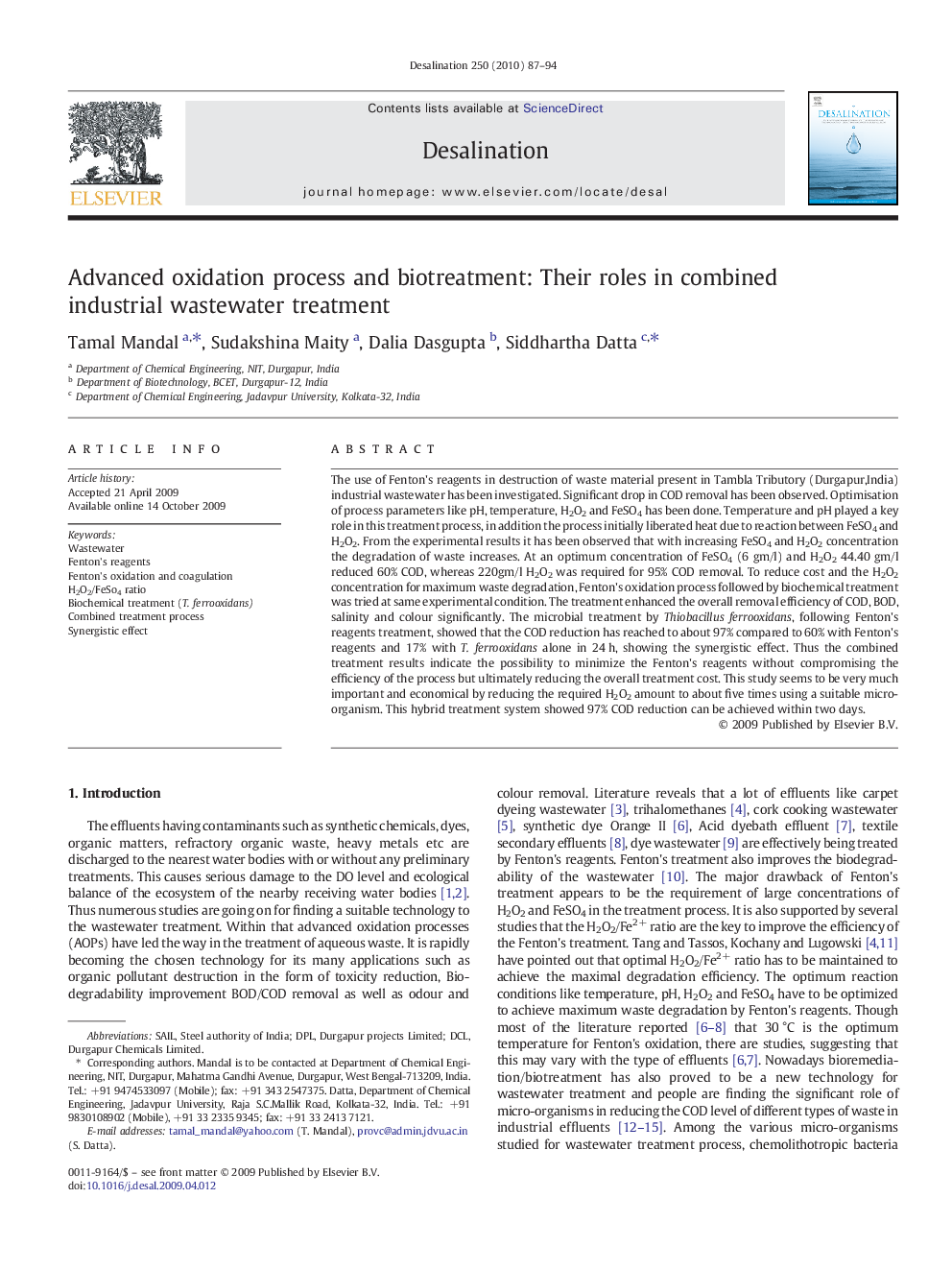| Article ID | Journal | Published Year | Pages | File Type |
|---|---|---|---|---|
| 10386112 | Desalination | 2010 | 8 Pages |
Abstract
The use of Fenton's reagents in destruction of waste material present in Tambla Tributory (Durgapur,India) industrial wastewater has been investigated. Significant drop in COD removal has been observed. Optimisation of process parameters like pH, temperature, H2O2 and FeSO4 has been done. Temperature and pH played a key role in this treatment process, in addition the process initially liberated heat due to reaction between FeSO4 and H2O2. From the experimental results it has been observed that with increasing FeSO4 and H2O2 concentration the degradation of waste increases. At an optimum concentration of FeSO4 (6 gm/l) and H2O2 44.40 gm/l reduced 60% COD, whereas 220gm/l H2O2 was required for 95% COD removal. To reduce cost and the H2O2 concentration for maximum waste degradation, Fenton's oxidation process followed by biochemical treatment was tried at same experimental condition. The treatment enhanced the overall removal efficiency of COD, BOD, salinity and colour significantly. The microbial treatment by Thiobacillus ferrooxidans, following Fenton's reagents treatment, showed that the COD reduction has reached to about 97% compared to 60% with Fenton's reagents and 17% with T. ferrooxidans alone in 24Â h, showing the synergistic effect. Thus the combined treatment results indicate the possibility to minimize the Fenton's reagents without compromising the efficiency of the process but ultimately reducing the overall treatment cost. This study seems to be very much important and economical by reducing the required H2O2 amount to about five times using a suitable micro-organism. This hybrid treatment system showed 97% COD reduction can be achieved within two days.
Related Topics
Physical Sciences and Engineering
Chemical Engineering
Filtration and Separation
Authors
Tamal Mandal, Sudakshina Maity, Dalia Dasgupta, Siddhartha Datta,
